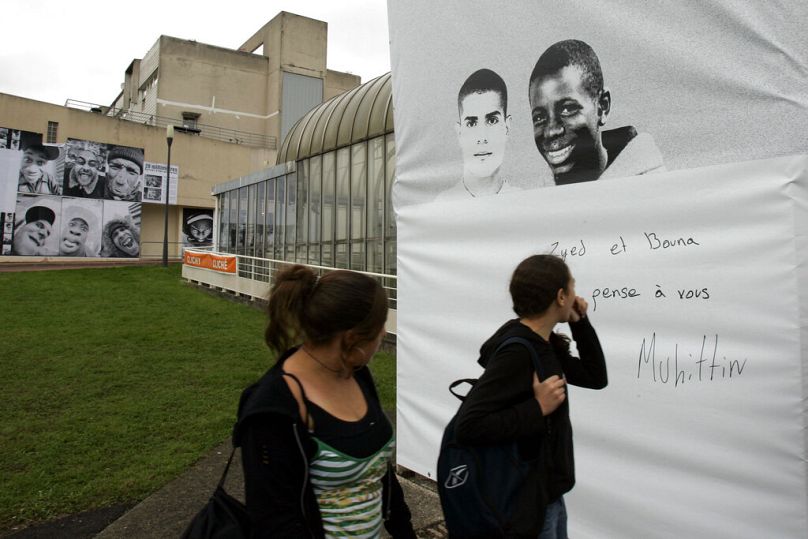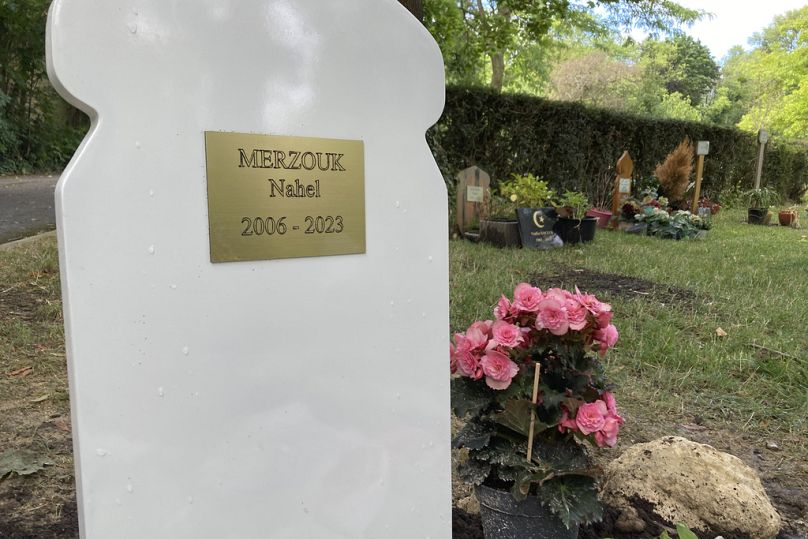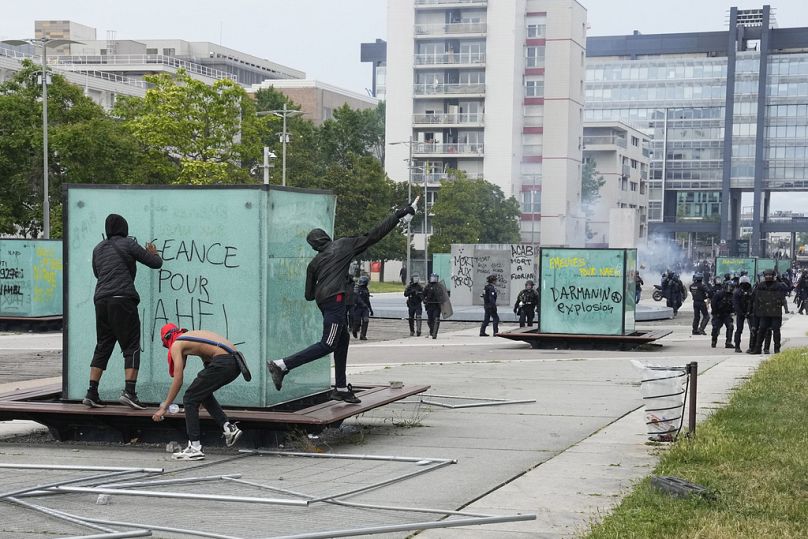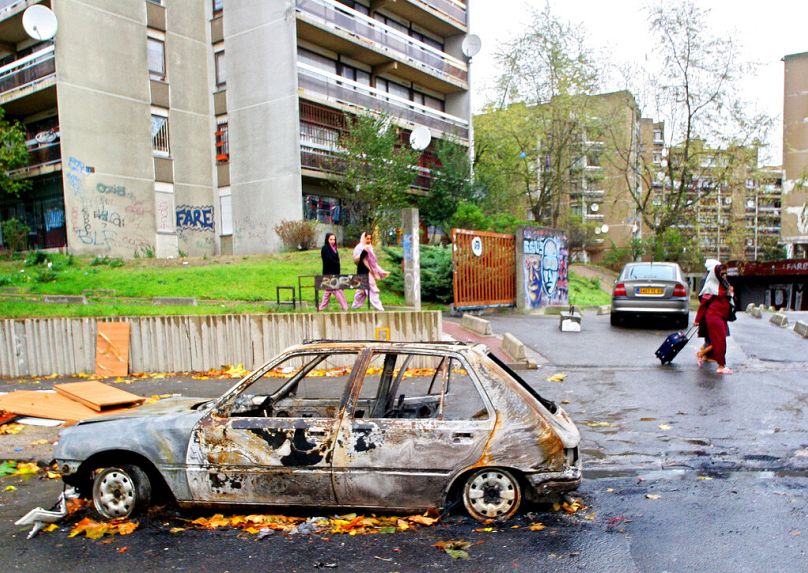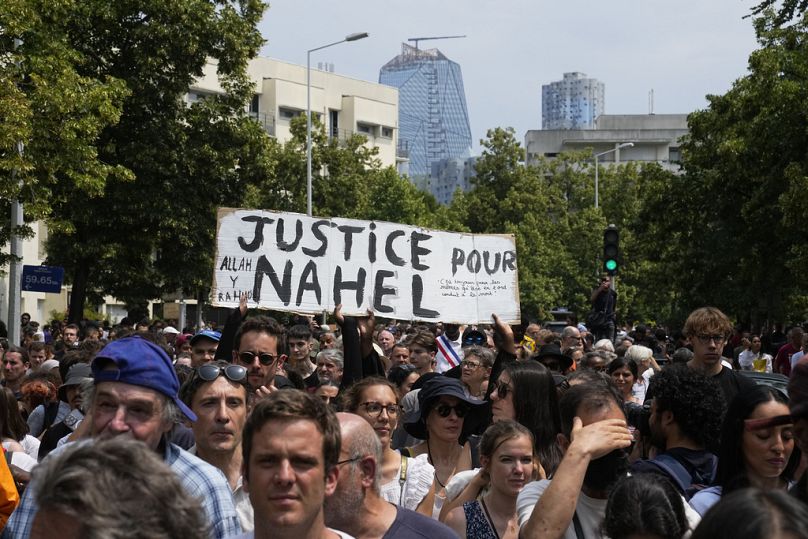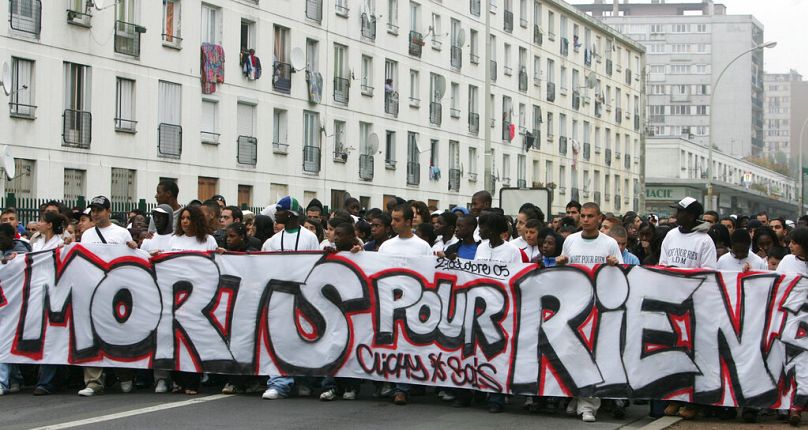France's national turmoil following the death of young Nahel, killed by a police officer while allegedly resisting arrest, is reminiscent of the 2005 riots that left their mark on the entire country. Two sociologists offer their analysis.
What parallels can be drawn between these two events? While the origin of the riots - the deaths of suburban youths during police checks - is similar, the social context is different.
And communication channels have greatly evolved, allowing the unfiltered and instantaneous dissemination of information.
The riots of 2023 were more intense than in 2005
In autumn 2005, France experienced three weeks of rioting, initially concentrated in the so-called "sensitive" suburbs of the Paris region, before spreading to other parts of the country.
The anger was sparked by the deaths of two teenagers on 27 October near Clichy-sous-Bois (Seine-Saint-Denis) - Zyed and Bouna - who were electrocuted in an EDF transformer substation where they had taken refuge to escape arrest.
Their deaths echoed those of two other minors a few months earlier and led to urban violence. More than 10,000 cars were set on fire, numerous buildings were damaged, dozens of police officers, gendarmes and demonstrators were injured and more than 6,000 people were arrested. The riots also left three people dead, two of them in fires.
On 27 June 2023, history repeated itself with the death of Nahel, a 17-year-old French-Algerian who was shot dead by a police officer when he allegedly refused to cooperate with the authorities.
According to the latest figures released by the Ministry of the Interior, the eight days of urban violence that followed caused as much damage and mobilised more security forces than the 2005 riots, which lasted three weeks.
Repeated scenarios
The riots of 2023 and 2005 are not the only uprisings to have taken place in France's recent history.
Sociologist François Dubet, who has counted some forty riots since the early 1980s, said he was struck by the repetition of the same scenario: "Every time, there has been a police blunder, every time, there has been violence against public facilities, police stations, schools, town halls. Every time, it ends in looting. Each time, the elected representatives and neighbourhood associations are not listened to, and the political responses are repeated."
Sociologist Fabien Truong agreed: "The same problems recur, i.e. very regular arrests, giving the impression that things are going to get out of hand, which happens quite regularly because it's all chronic. Unfortunately, deaths in working-class neighbourhoods as a result of encounters with the police happen every year. This reflects a very vertical relationship with a logic of suspicion, with the police often intervening blindly.
Young people who feel "neglected
In 2005, much like in 2023, many 16 and 17-year-olds took to the streets to express their anger and resentment.
"It's a minority of young people in the inner suburbs who, rightly or wrongly, feel they've reached an impasse, they've been let down and, deep down, they feel they have nothing left to lose. These are young people who don't have enough adult presence around them", explained Fabien Truong.
The problems are profound: the ghettoisation of neighbourhoods, precariousness, unemployment, the failure of the national education system, racism, discrimination and delinquency are among the symptoms most often cited.
François Dubet also stressed the emptiness surrounding young people involved in urban violence: "Behind the rioters, there is no organisation, no party, no trade union, no mosque, there is nothing. What is characteristic is the political vacuum. The mayor, who did everything he could for the social centre and the youth centre, can still talk, but he talks to a vacuum. Nobody hears him.
In 2023, social networks played an accelerated role
Social networks, which did not exist in 2005, have also played a catalytic role, as François Dubet explained: "Nahel's murder was filmed. Every citizen was therefore able to see a policeman brandishing a revolver at the head of a boy driving a car. In 2005, nobody saw anything, everything was interpreted and discussed.
The scenes of destruction and looting broadcast on social networks create a buzz and have a snowball effect: "We can see that there are staged effects (...) What's more, the networks have changed the way we perceive the relationship between the police and the public today", Fabien Truong points out.
A more explosive social context in 2023
This year the social context seems more explosive than in 2005. France has just experienced several weeks of strikes and demonstrations linked to pension reforms.
The country is still marked by the Gilets Jaunesmovement against job insecurity and social injustice, two years of health restrictions linked to the COVID-19 crisis and soaringinflation, linked to the war in Ukraine, which is weighing on purchasing power.
The impact of other events abroad has also spread to the European Continent, such as the death of the African-American George Floyd, a symbol of the police violence and discrimination suffered by the black community in the United States.
In 2005, Nicolas Sarkozy, then Minister of the Interior, used some controversial phrases to inflame the public. " We're going to clean up the housing estates with a Karcher", the future president declared during a visit to La Courneuve, a suburb in the Paris region. On 25 October, shortly before the riots, Sarkozy did it again, this time addressing residents of the Argenteuil district: "You've had enough of this gang of scum? Then we'll get rid of them.
Outside France, there's an impression of widespread chaos
Like in 2005, images of the recent riots were widely broadcast around the world, giving an impression of chaos in France, where the suburbs are perceived by some foreign observers as lawless areas where crime reigns.
"The people who live in these areas are not drug dealers. Even though there is massive unemployment, most of them work, and they may be less wealthy, but they live normal lives", said sociologist François Dubet, who also noted a form of ambivalence within this population: "The residents condemn the violence because it destroys their neighbourhood, but they also denounce police racism while demanding more police because it is no longer liveable".
Fabien Truong also believes that urban violence in France distorts the reality of working-class neighbourhoods: "When you look at the population flow figures, you see that there is a lot of social mobility.
"And so if the neighbourhoods are becoming poorer, it's also because families who are successful or who improve their living conditions leave these neighbourhoods", stressed the sociologist, who also pointed out the many successes of young people.
"There is a fringe of young people who have really found their place in French society. You only have to look at who works for the SNCF, who works for companies, who are in the French national team, who are the favourite personalities of the French, and what is the most listened to music, rap. But the other side of the coin is the impoverishment of the neighbourhoods themselves".












